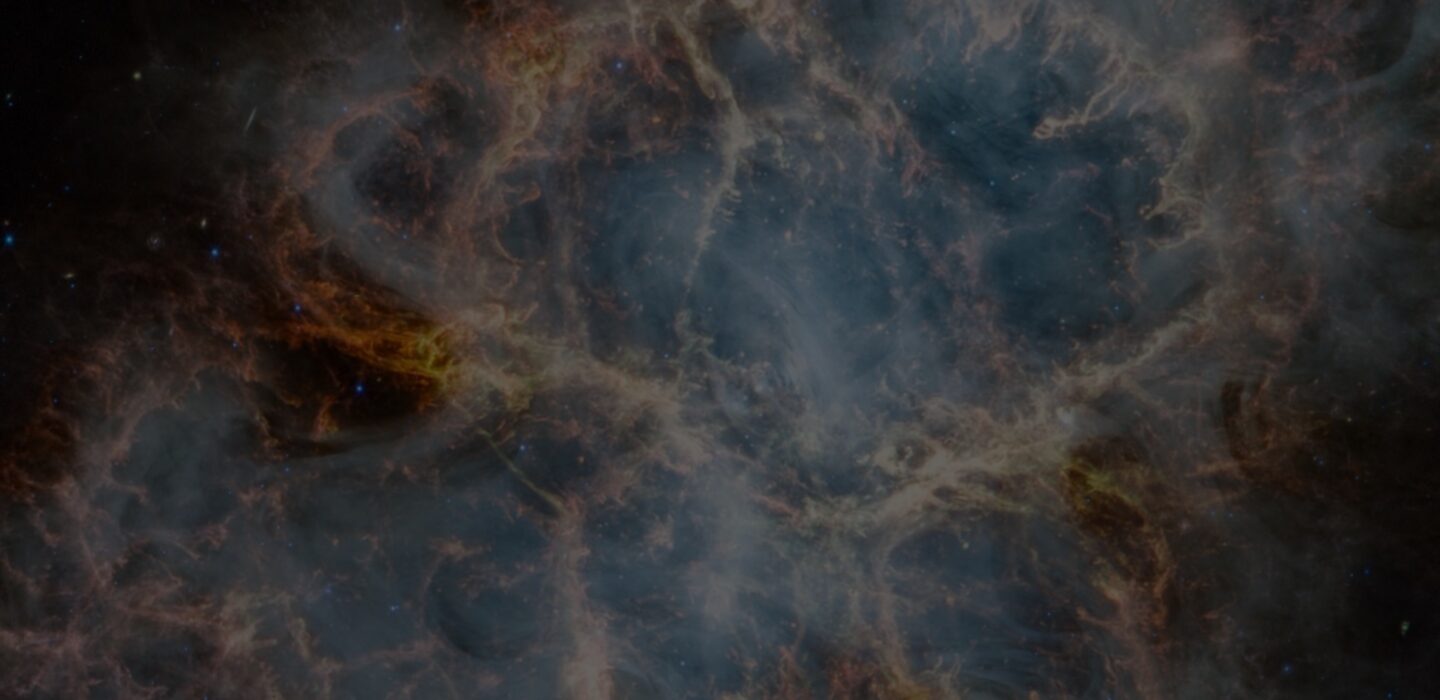Astronomers Characterize the Atmosphere of a Young Transiting Exoplanet
Adapted from materials written by the Netherlands Research School of Astronomy (NOVA) and Marieke Baan.
Using data from the James Webb Space Telescope, astronomers have characterized the atmosphere of a young transiting exoplanet and found it to be unusually clear and puffy. By analyzing the planet’s atmospheric features, they were able to precisely measure the planet’s mass, surpassing traditional dynamical techniques like radial velocity, which poorly perform with such active young stars. They also obtained detailed information about the chemical compositiono of the planet’s atmosphere.
V1298 Tau b is just 10 to 30 million years old and has an unusually clear and puffy atmosphere. The astronomers, led by Dr. Saugata Barat, have detected strong absorption signals from molecules like water vapor, methane, carbon dioxide, carbon monoxide, and even hints of complex photochemical processes, such as tentative detections of sulfur dioxide (SO₂) and Carbonyl Sulphide (OCS).
Despite the rich spectrum, the atmosphere is surprisingly metal-poor – around 100 times less enriched than mature sub-Neptunes – suggesting that it is still evolving and may become more metal-rich with time. Another surprise comes from the fact that the planet shows 100 times less methane than expected, which can be the result of extreme internal heat and strong vertical mixing in the atmosphere.
Such high internal temperatures are inconsistent with standard thermal evolution models for sub-Neptune-sized planets, challenging the current understanding of their formation and early evolution. These results strongly motivate further studies of young planetary atmospheres to explore how composition changes over time.
“We found that V1298 Tau b has a much clearer and metal-poor atmosphere and hotter interior than what observations of sub-Neptunes have previously revealed. This suggests that evolutionary processes are still unfolding and will potentially transform the atmospheric composition of this planet with age” says Barat, now a Postdoctoral Associate at the MIT Kavli Institute for Astrophysics and Space Research. Barat conducted the research at the University of Amsterdam with his thesis adviser, Professor Jean-Michel Désert.
Based on previous Hubble observations of the planet, the team hoped to see water vapor in the atmosphere of the planet and potentially methane. The JWST observations enabled much more detailed information, including measuring the abundances of other carbon-bearing molecules (CO and CO2), as well as photochemical products like SO2 and OCS.
“The JWST observations were needed to precisely constrain the mass and atmospheric composition as it gave us access to multiple molecular absorption features (H2O, CH4, SO2, CO2, CO) in the near infrared,” Barat explains.
The observations were done with JWST NIRSpec filter G395H. When the proposal was written, JWST had not yet been launched and none of these molecules, apart from water, had been confidently detected using low resolution space based spectroscopy.
“In a way JWST gave us so much more than we had initially anticipated,” says Barat.
The paper, published this month in The Astrophysical Journal, reshapes how we think about the earliest stages in the lives of sub-Neptune planets. By directly observing the atmospheric composition of such a young planet, it provides the first observational constrain to anchor future models of planetary structure and evolution. V1298 Tau b offers a rare glimpse into what these planets look like just after they form.
It also suggests the possibility that V1298 Tau b’s atmosphere isn’t fully mixed. Instead, heavier elements may be buried deep within, gradually revealed over time as the planet cools and evolves. This could explain both the low observed metallicity and the unexpectedly high internal heat. If this is correct, it would mark the first observational evidence of a metallicity gradient in a transiting exoplanet — a feature seen in the giant planets of our own solar system.
Image credit: Jean-Michel Désert, Saugata Barat, and Kamalika Chakraborty.
Papers:
“A metal-poor atmosphere with a hot interior for a young sub-Neptune progenitor: JWST/NIRSpec transmission spectrum of V1298 Tau b” by Barat et al

